For Lisabeth Willey, it was turtle love at first sight, and she’s had a lifelong love affair with shelled reptiles. A conservation biologist and a professor at Antioch University New England, Willey has studied ecological systems ranging from the high alpine regions of New Hampshire, Quebec, and Newfoundland to the tropical forests of the Yucatan Peninsula. She’s also a founding board member of the American Turtle Observatory, which develops conservation strategies to help turtles, especially those with threatened and endangered populations.
I remember the first time I watched a painted turtle lay a clutch of eggs up close. It was awe-inspiring. It was in a gravel pit in the town where I grew up that was slated for development as soccer fields. It blew my mind that this turtle mom would crawl out of the wetland and risk desiccation or being run over by a car or ATV, attacked by a predator, or collected by a curious child, to lay her clutch. And I was fascinated by the idea that just two months later, the little hatchlings would emerge and make their way back to the wetland all on their own. That is, if they weren’t eaten by a raccoon, skunk, or other mesopredator before that, and those odds just seemed astronomical.
The more I learned about turtles, the more interesting they became to me. These creatures have been around for over 200 million years, have seen the dawn of angiosperms, the rise and fall of the dinosaurs, the passage of so much time. As a group, they have endured so much evolutionary time and environmental change, only to be brought to the brink by humans. I can’t let them blink out in my lifetime.
I have always loved being outside. I grew up in eastern Massachusetts, north of Boston, surrounded by the rapidly fragmenting white pine-oak forest that is characteristic of that part of New England. I used to spend a lot of time hiking, camping, catching frogs and newts, and just generally playing outside with the neighborhood kids. The woods behind our house was a favorite spot. My dad built a tree fort there out of logs when we were little, and my sisters and I and our neighbors would spend hours playing back there.
About a half mile down the road was a larger wooded area where I found remnants of a very old, rusted car. The idea of someone driving a car back in the woods and leaving it fascinated me, and I wrote a story about it for English class, about a bank robber, Captain Jack, who drove into the woods with his stolen money so no one would ever find him. This was, of course, before I realized that the car may have been left in the corner on an old farm field, and the woods had probably grown up around it. Learning that land-use history made the spot even more magical. I was struck that a lived human experience, even one as intense as a lifetime of farming, could be so ephemeral on our landscape compared to the continuous dynamism of the forest.
Sadly, both of these places were developed. The woods behind my house were cleared for a subdivision when I was in high school, and the area with the car was cleared for a new school when I was in college. I think watching my favorite spots be lost to development, like so much of the woods around where I grew up, fundamentally altered the trajectory of my life. It inspired me to seek out and spend time in special places, which drew me to the northern forest, and to study rare species in the hopes of, at least in some small way, improving their chance at survival.
I’ve had many positive outdoor experiences that inspired my interest in the environment and conservation. Working for the Appalachian Mountain Club on their hut croo, as an intern for the Mount Washington Observatory, and as a field technician for USGS on Mount Desert Island in Maine all added to my love for the outdoors, the forest – and propelled my career path toward ecology.
Since setting foot on Mount Washington when I was 10, I’ve been fascinated by the alpine environment and the organisms that live there. Like turtles, alpine systems are long-lived and vulnerable to habitat loss and fragmentation. For alpine flora, trampling and climate change are also major concerns. As an undergraduate, I undertook a semester with the Center for Northern Studies in Vermont, where we went on a month-long field trip to Newfoundland and Labrador, and I fell in love with that region’s forests and alpine systems.
Turtles are unique among wildlife in that you can observe them up close, and they really embody the landscape they live in. They can’t just pick up and fly down to the tropics in the winter, or scamper miles away like a deer might. They are tied to that patch of forest or swamp. If you find a place with a thriving population of turtles, you know you’ve got a pretty special place worthy of protection.
Box, wood, spotted, and Blanding’s turtles are all part of the emydine subfamily. They take longer to mature than painted turtles, and lay fewer eggs than snapping turtles, so they are much more vulnerable. They can move miles overland seeking new wetland habitats, which in today’s New England landscape will inevitably bring them across a road. Their use of terrestrial habitat also makes them more vulnerable to collection, mowing, and habitat loss. Consequently, all of the emydines are of conservation concern and are protected in the northeastern states in which they occur, and Blanding’s, spotted, and wood turtles have been petitioned for listing under the federal Endangered Species Act. New England is the center of diversity for this group, so we have an obligation to preserve them in our wetlands, fields, and forests.
Globally, the pet trade is probably the biggest threat to the survival of freshwater turtle species. This has become a larger issue locally, as North American species have become desirable in overseas markets, although there are many domestic traders as well. Recently, state agency biologists, the US Fish and Wildlife service, and non-agency partners have begun working more closely with law enforcement to try to address this issue.
Here in the northeastern US, habitat loss and fragmentation, along with associated mortality from cars, mowers, incidental collection, and meso-predators, are among the largest concerns. I’ve been working with local, state, and federal partners across the northeast to develop regional conservation plans for the emydine species. By working across state lines, biologists have been able to learn from each other, to share ideas and see what works, and we’ve been able to identify the highest priority populations in need of conservation. Once identified, we have worked with agencies, land trusts, landowners, managers, and other organizations to conserve and manage those high priority sites.
I think facilitating cooperation between wildlife agencies and law enforcement to identify poachers and build cases against them is important, and so is public education. In places where recreational users and landowners are aware of the issue, they can act as stewards, reporting suspicious activity to law enforcement, hopefully deterring more would-be poachers.
Parts of the northern forest remain a stronghold for the wood turtle. Active working forests can be compatible with this threatened species if sufficient buffers are left along rivers and road infrastructure maintains a low footprint and is temporary in nature, so that the streams remain low use, and poachers aren’t able to easily access them. Unfortunately, because of the very real concern for poaching, locations of the best sites need to be kept secret, making it difficult to conserve or manage them.
Turtles are very vulnerable to anthropogenic landscape change, and their populations are sensitive to the loss of even just a couple of animals. They aren’t like deer, birds, or mice – it takes them a LONG time to replace themselves in the population. They have very low egg, hatchling, and juvenile survival rates. Some species take up to 20 years to mature. They compensate for this with an exceptionally long lifespan, and some turtles may live over 100 years.
Their hard shells protect them from most predators as adults. This strategy worked really well over evolutionary time. So long as there are a few good years in a century, a turtle can replace itself in the population. But this strategy does not work well in today’s highly fragmented landscape. As turtles are run over or collected, populations are no longer able to persist. They are being hit on both ends, from adult mortality as well as decreased egg, hatchling, and juvenile survival as mesopredator populations increase due to human subsidies and a lack of apex predators. This combination of threats together with their life history is not a sustainable combination.
These last few months, it’s been interesting to see the increased recreational traffic at a lot of forests and other natural areas as a result of the pandemic. It’s wonderful to see so many people connecting with the land, but I do wonder how that increased traffic is altering systems. At a few of our study sites, we’ve seen increases in the creation of unauthorized trails and climbing routes. That can have detrimental impacts on the wildlife in the area.
I really love visiting the study sites where I’ve been working for almost 20 years in some cases. I love watching them change, and seeing “old friends,” turtles I first met or tracked more than 10 years ago. I also love visiting these places with my students as they embark on whole new projects, and asking new questions and finding new ways of investigating these landscapes. The woods are constantly changing. There’s always something new to notice every time, regardless of how many times you walk a particular trail or section of forest.
Ecology and time in the woods is really a family affair for me. My husband, Mike Jones, is also an ecologist who studies turtles, and we both love to watch our two young sons, ages 3 years and 5 months, experience the forest. They help us to notice things and observe patterns we might have missed and allow us to see the forest in a whole new light.


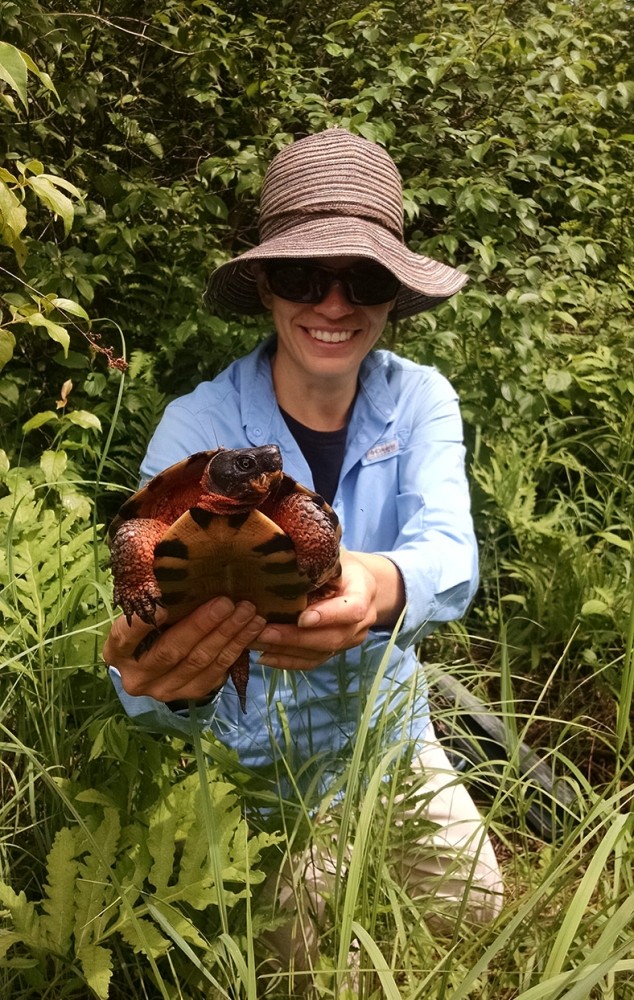
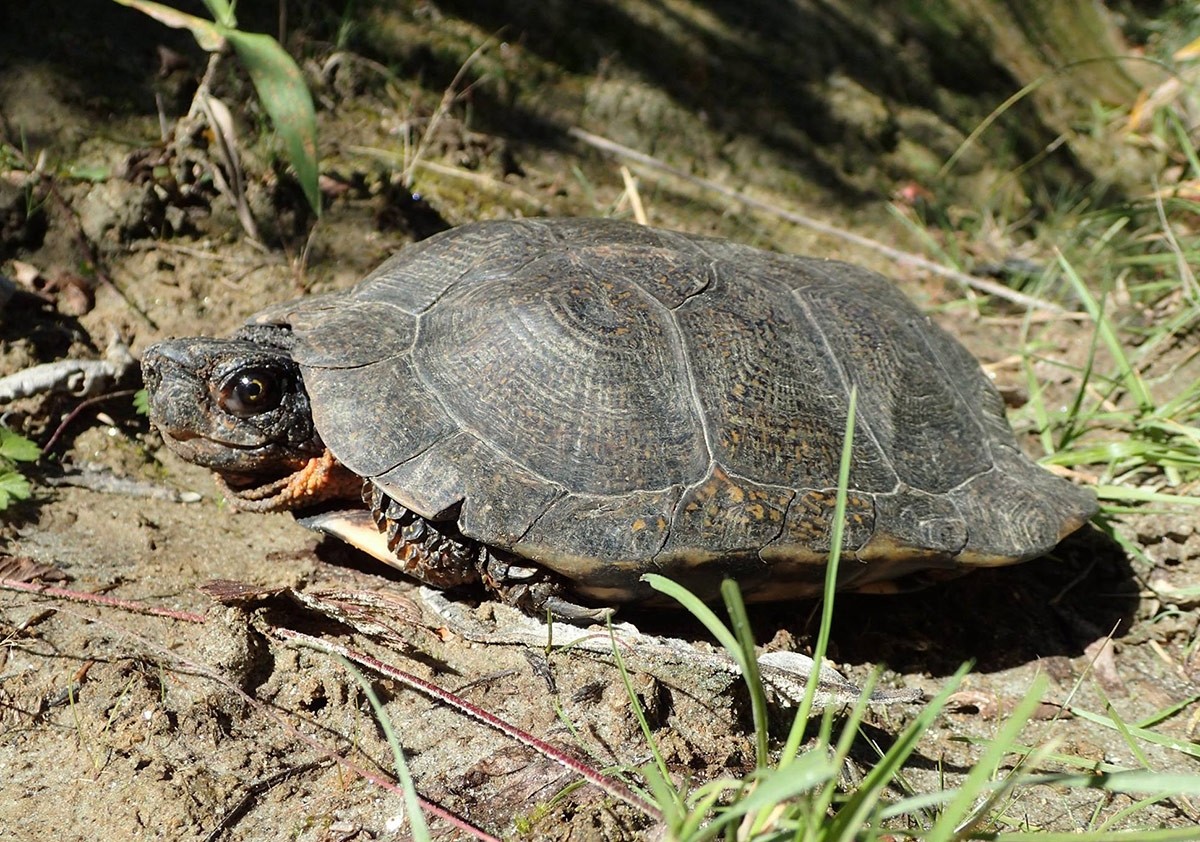
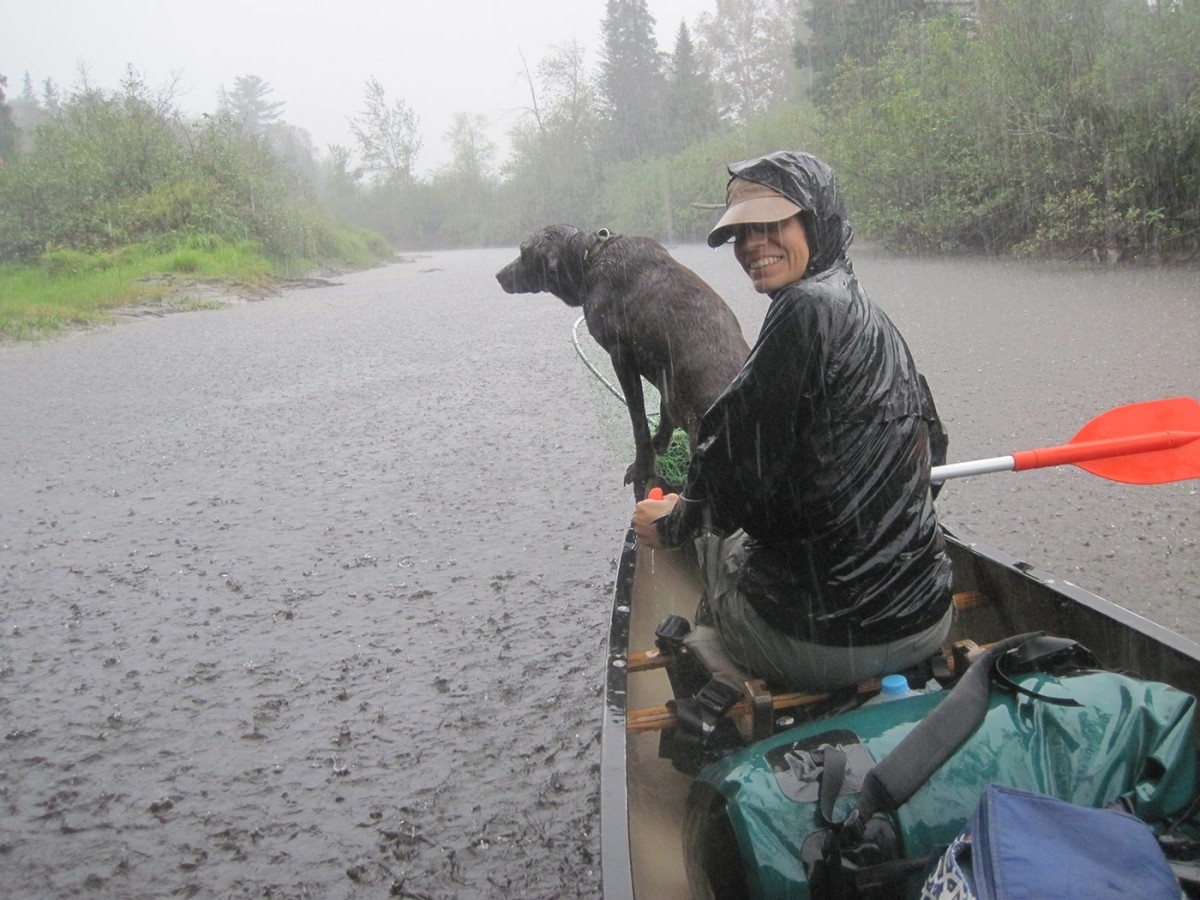
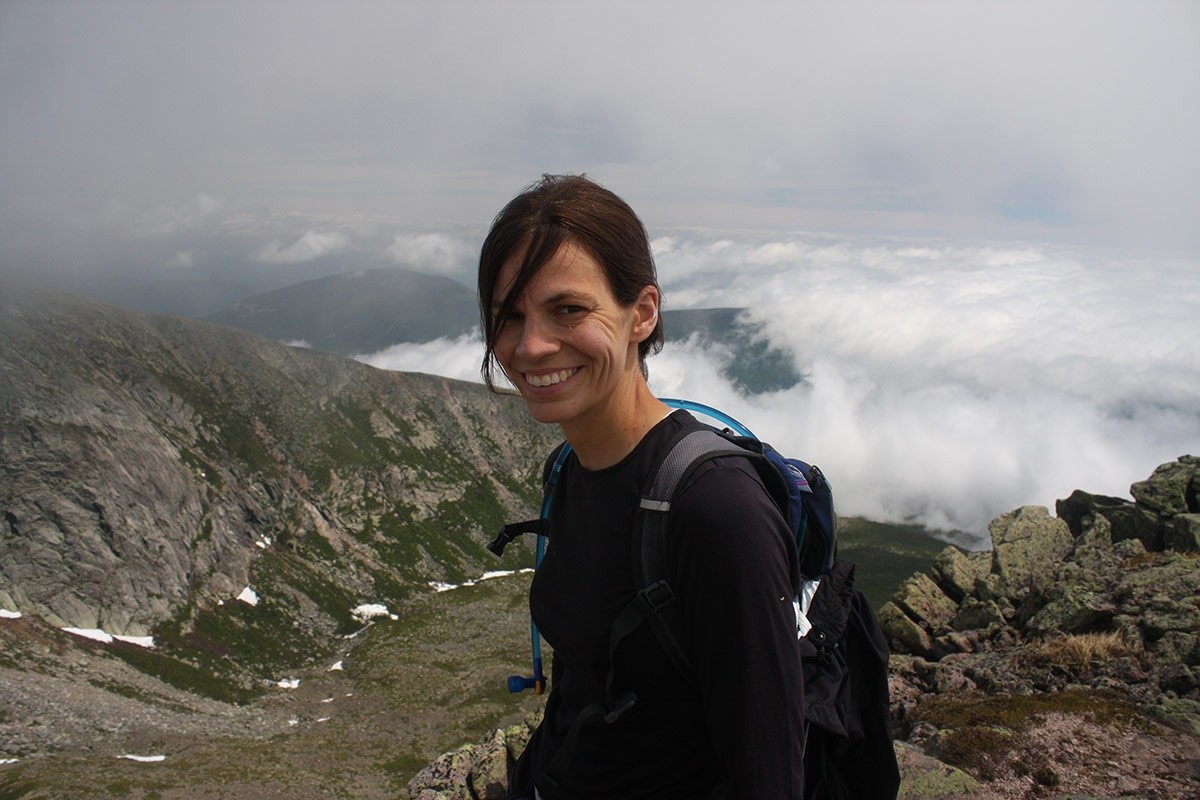
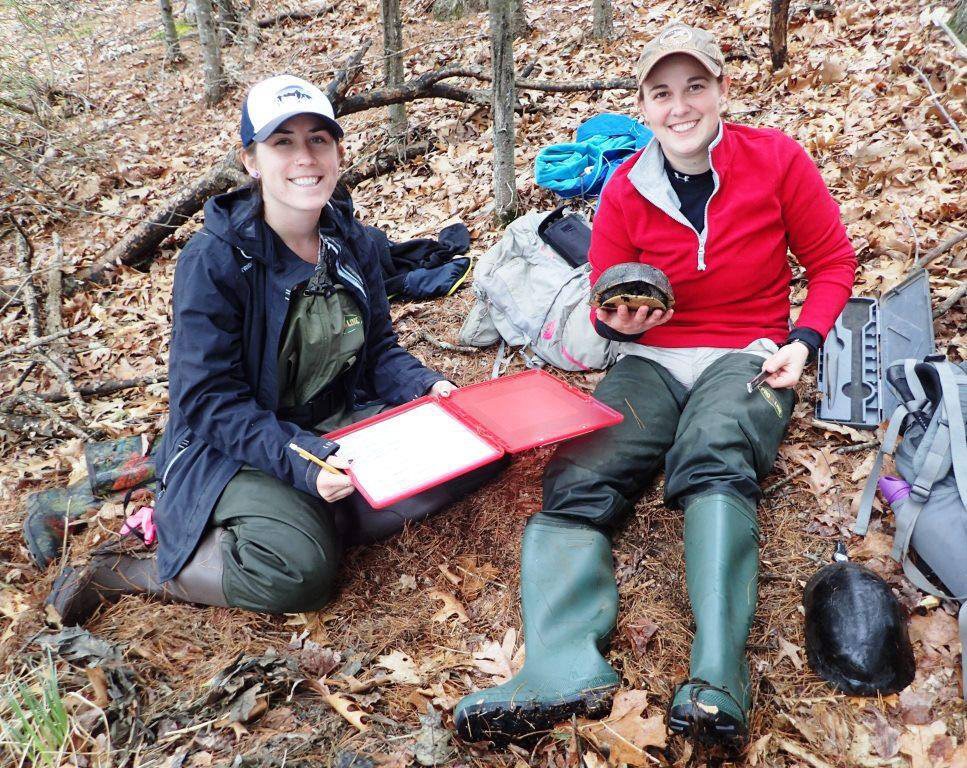

Discussion *